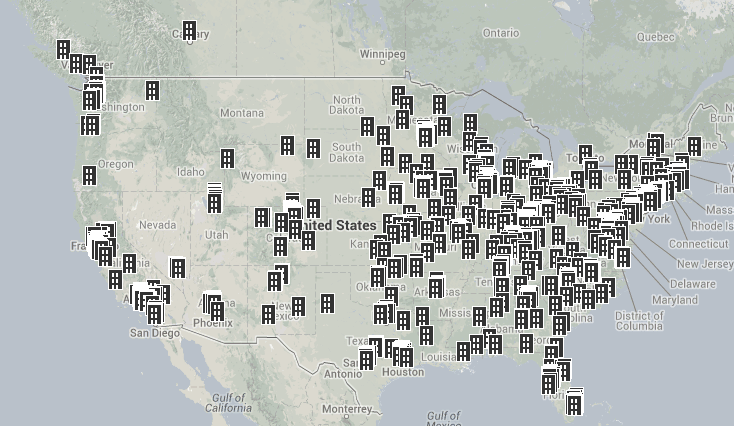Code Green Solutions


GBIG maps the distribution of green buildings around the world
This study, Geographic and Temporal Patterns in Green Building, examines data from green building projects that have achieved certification under the U.S. Green Building Council’s Leadership in Energy and Environmental Design (LEED™) for New Construction rating system in the United States over the last five years. The purpose of the study was to characterize geographic patterns in the use of green building strategies and identify trends in practice over time. Data analysis focused on collections of green building strategies, including total points achievement, achievement within credit categories, and a new concept called a credit index.
Each metric was evaluated across geographic subdivisions (U.S. states) and between two time periods (2006-2008 and 2009-2011). The metrics show substantial geographic variation and shifts over time. Most metrics have unimodal distributions, but their mean values vary along with the degree of skew and variance. All distributions have shifted toward higher levels of achievement between the two time periods, although the magnitude of changes varies for each metric.
On average, LEED projects certified during the period of 2009-2011 received recognition for a greater fraction of available credits than projects during the period 2006-2008. The results of the analysis demonstrate significant geographic variation in green building practice across multiple metrics. The data indicate specific areas of high achievement and, conversely, other areas that have yet to adopt practices that are commonly used elsewhere.
These patterns underscore the geographic complexity and temporal dynamism of the green building movement. These patterns and trends are also a significant measure of market transformation suggesting that market participants are increasingly willing and able to adopt higher performance practices. Beyond these general observations, this study does not explicitly attempt to assign causal factors to the patterns identified in the data. Nearly every figure suggests important questions about constraints on the diffusion of innovation and the adoption of specific practices. Over time, these findings will provide the basis for more detailed investigations to understand past, present, and future green building practice.